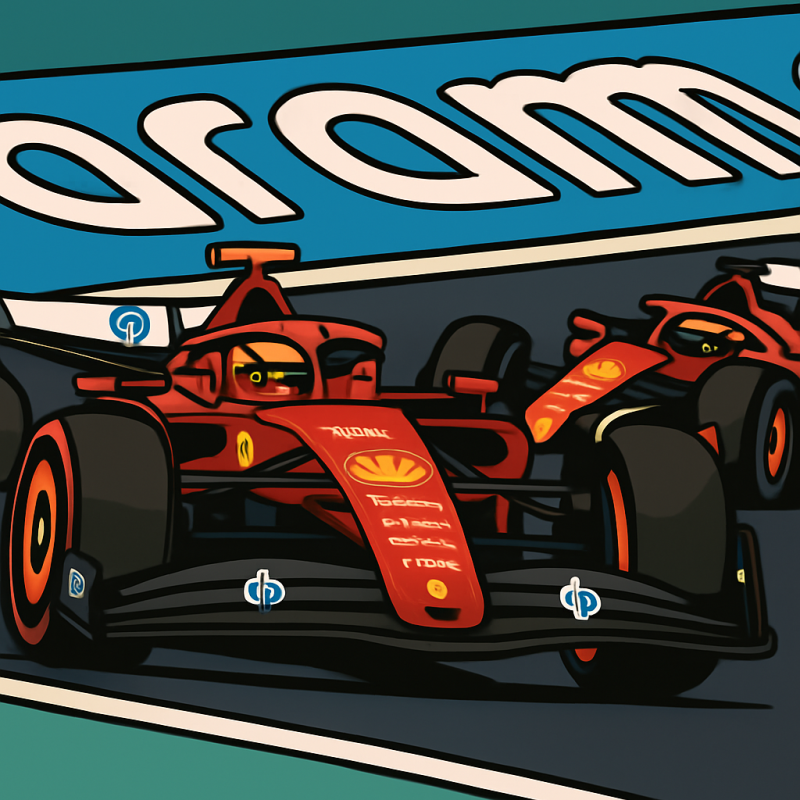Ferrari’s ride-height riddle: Schiff calls out “cagey” SF-25 after Zandvoort gap
Seven-tenths off McLaren in Dutch GP qualifying and still hunting a first grand prix win after 14 rounds, Ferrari keeps saying everything is under control. The paddock isn’t buying it. And neither is Naomi Schiff.
The former W Series racer and now Sky F1 pundit didn’t dance around it in Zandvoort. “Frustratingly Ferrari haven’t really clearly come out and said this is the issue we’re struggling with,” she said. “They seem to be very cagey about what’s going on behind the scenes.”
Cagey or not, the whispers haven’t stopped since April. Ferrari’s SF-25 is suspected to be happiest running low — a little too low for the rulebook. Those rumours first flared after Lewis Hamilton won the Chinese Sprint lights-to-flag, only for Ferrari to see him disqualified from the grand prix 24 hours later when the plank wear failed scrutineering. From then on, the narrative stuck: Ferrari’s sweet spot lives in a no-go zone.
Hamilton essentially admitted as much in Japan when he said the team was running the car “higher than we want to be.” It hasn’t gone away. At the Hungaroring, Charles Leclerc fumed over radio that his Ferrari became “undrivable” as he bled two seconds per lap in the final stint. George Russell, who hunted down Leclerc for the last podium place, suggested the SF-25 looked “close to being illegal,” theorising Ferrari had been forced to crank up tyre pressures after running the car too close to the deck.
Schiff summed up the paddock chatter. “There’s a lot of whispers in Formula One, everybody talks… it does sound like, unfortunately, the level at which they want to ride the car, as low as they want to go, isn’t necessarily legal, because they have too much ride on the plank,” she said. “So they’re having to lift the car up to be legal by the end of the race, and therefore they’re dialing out performance from the car. And it’s not working for them.”
It isn’t, especially when the benchmark is a McLaren that’s walking away with it. Pre-season talk had Ferrari poised to take the fight to Red Bull; the reality is a papaya freight train. McLaren is cruising not just toward both titles but a 1-2 in the Drivers’ standings. Ferrari, for its part, is still the best of the rest — second in the Constructors’, 24 points up on Mercedes — but the gap to the front is stark. At Zandvoort, Leclerc tucked in behind his new Ferrari teammate Hamilton in qualifying; come Sunday, both were left chasing shadows.
Team boss Frédéric Vasseur has been consistent: there’s no “fundamental” flaw here, just the same knife-edge compromise every ground-effect car faces. “We all want to run the car lower, we would all have more downforce in the situation… but there is a limit,” he said. “The limit is bottoming and the limit is the regulations. We are all spending the weekend on where is the limit and where can we run the car a bit lower and then you are too low. It is the same for everybody.”
He’s not wrong on the history. Remember Austin 2023? Both Hamilton and Leclerc were thrown out for excessive plank wear. This era punishes the greedy. Ferrari’s point is that the line is thin, and everyone treads it.
The problem for Ferrari is perception — and lap time. When your two drivers are Hamilton and Leclerc, expectations aren’t moderate. Fourteen races in, there’s a Sprint win on the board but no grand prix victory to show for it. A McLaren margin of seven-tenths at a track like Zandvoort, where mistakes and wind gusts usually compress the field, is the sort of gap that turns whispers into headlines.
Ferrari insists the SF-25’s operating window is improving and that the ride-height chatter is overblown. Maybe. But in a season defined by McLaren’s relentless gains, “decent on Sunday, compromised by legality safety-margins” isn’t a title-winning development plan. It’s a holding pattern.
The stakes are obvious. If Ferrari can unlock the low-ride-height aero pay-off without skirting legality — or find a different route to similar downforce — the car suddenly looks like a podium regular with teeth. If not, the picture remains what it’s been since Shanghai: quick in bursts, hamstrung when the plank starts to graze, and forced to trade performance for peace of mind.
For now, Ferrari’s saving grace is the points column. Second in the Constructors’ is still second, and keeping Mercedes at arm’s length matters. But the standard in 2025 is McLaren, and they’re not just out front — they’re gone, holding a 299-point cushion.
Ferrari doesn’t need a statement. It needs a solution — one that lets Hamilton and Leclerc run where the car wants to run, and finish where Ferrari expects to finish. Until then, every millimetre will feel like a mile.




